
to below, a tall after funnel © Andrew Arthur.



| "H" class Fleet Destroyers |
| Name | Pennant | Builder | Launched | Fate |
| Hardy * | H87 | Cammel Laird | 7 April 1936 | Sunk April 1940 at Narvik |
| Hasty | H24 | Denny | 5 May 1936 | Torpedoed by U-55 June 1942 |
| Havock | H43 | Denny | 7 July 1936 | Wrecked April 1942 |
| Hereward | H93 | Vickers Armstrong | 10 March 1936 | Torpedoed May 1941 by Italian planes |
| Hero | H99 | Vickers Armstrong | 10 March 1936 | To RCN a Chaudiere 1943, Scrapped March 1946 |
| Hostile | H55 | Scotts | 24 Jan. 1936 | Mined off Cape Bon Aug. 1940 |
| Hotspur | H01 | Scotts | 23 March 1936 | To Dominican Republic as Trujillo 1948 |
| Hunter | H35 | Swan Hunter | 25 Feb. 1936 | Sunk April 1940 at Narvik |
| Hyperion | H97 | Swan Hunter | 8 April 1936 | Torpedoed Dec. 1940 by Italian Serpente |
* - Flotilla Leader
 |
| 1:600 view of the "H" class members,
prewar, which retained the flat faced bridge. Note tripod
mainmast, and, compared to below, a tall after funnel © Andrew Arthur. |
 |
| "Hereward" prewar. Both the new angled bridge-face and the temporary twin 4.7" mount were very novel. The latter was the prototype for the type in the "Tribal", "J", "K" and "N" classes. © Andrew Arthur. |
 |
| 1:600 Hero. She too had the new standard of bridge face, and in this wartime view, 20mm AA added, extra DC's in place of "Y" gun, a hedgehog in place of "B" and a 4" AA gun in place of the after tubes. To improve 20mm fire-arcs, the after funnel and large tripod were cut down. © Andrew Arthur. |
 |
| Hotspur was similarly armed as Hero but had "B" gun and the flat faced bridge. © Andrew Arthur. |
By further small weight reductions in the
"G" class design, so the "H" evolved, with an
enlarged flotilla leader - the Hardy. It was this class
that took part in the Second Battle of Narvik, where Warspite
and the "H" in attendance barged into Ofot Fjord and
sank a great number of German destroyers, for the loss of 2 of
our own.
Wishing for a DP and not an LA 4.7" gun mount, the guns,
which had previously been placed in recessed wells to allow
elevation to the dizzy heights of 40 degrees to test the idea,
were placed on new pivoting mounts to allow greater elevation.
The Hereward was fitted with an experimental twin
mounting in "B" position, and so a new, armoured bridge
/ wheelhouse was devised - with the characteristic angled sides
and top. This was judged a success, and so was worked into Hero's
design, and all later destroyers.
Main wartime changes were shortening the after funnel to improve
AA arcs, removing the mainmast and replaceing a torpedo bank with
a 12 pounder AA gun. Various other changes were made to thew
remaining pair, generally invollving adding 20mm AA cannons and
replacing "Y" gun with extra DC's.
| Pictures of "H" class Destroyers |
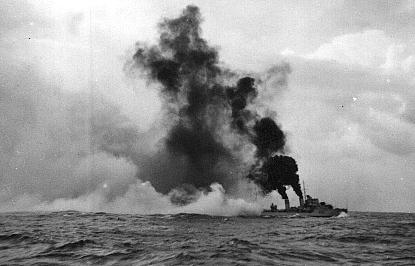 |
| Hereward makes a lot of
smoke, thanks to Ken Ettie for photo. Just visible is the
square bridgework, not possesed by the two sisters below. |
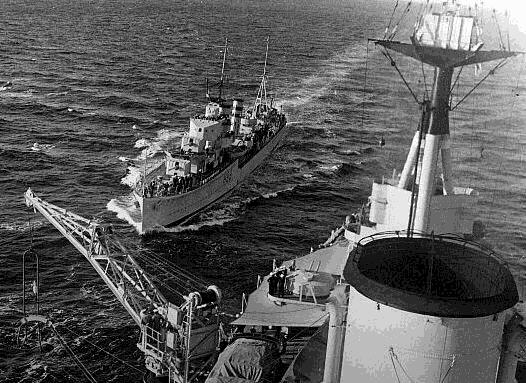 |
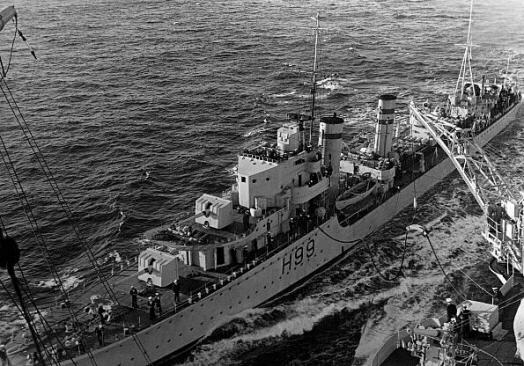 |
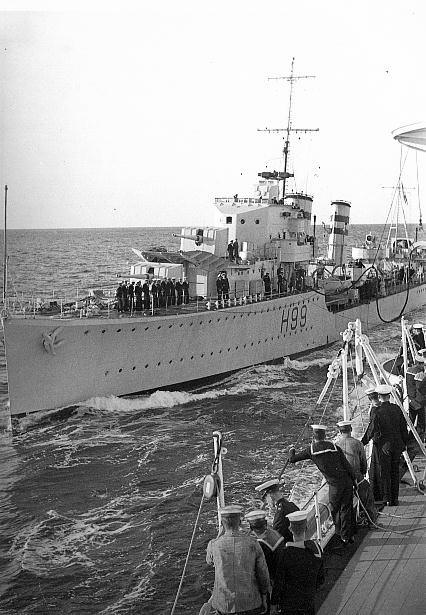 |
| Huge thanks to Ken Ettie for the
above sequence showing his Father's Hero oiling from Repulse in the happy days of the 1930's Meditteranean. The action can be followed very well - Hero approaches, is the oiled, and then pleasantries are exchanged before she makes off back to her station. |
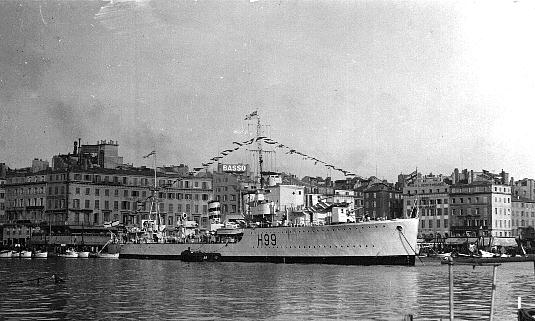 |
| George Ettie's Hero in port, thanks to Ken for the picture. |
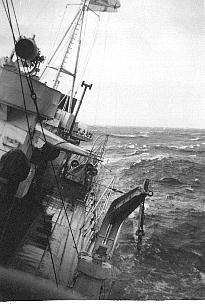 |
| Hero rides out a huge swell - got to watch not to fall on a deck like that! |
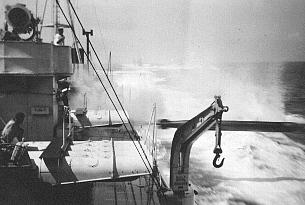 |
| Hero's tubes are trained
to port in this shot taken at full speed, possibly just
after torpedo launch. |
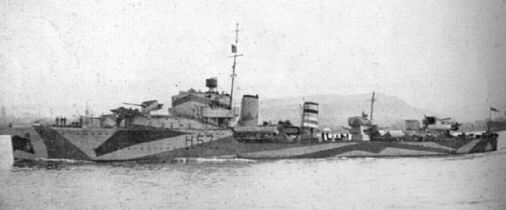 |
| Herspeus in a wartime camouflage. Note funnel banding. |
| Dimensions | |||
| Full Displacement | 1860 tons, 1953 tons Hardy | Length | 323', Hardy 337' |
| Light Displacement | 1340 tons, 1505 tons Hardy | Beam | 32.25', Hardy 34' |
| Load | 520 tons, 448 tons Hardy | Draft | 8.5', Hardy 8.75' |
| Performance & Propulsion | |
| Machinery | 4 x Admirality 3 drum boilers, 2 x Parsons Steam Turbines @ 34000 hp ( Hardy, 38000 hp ) |
| Speed | 35.5 kts ( Hardy, 36 kts ) |
| Complement & Armament | |
| Complement | 145 Officers & Ratings, Flotilla Leaders 175 |
| Armament |
|
| Back | |